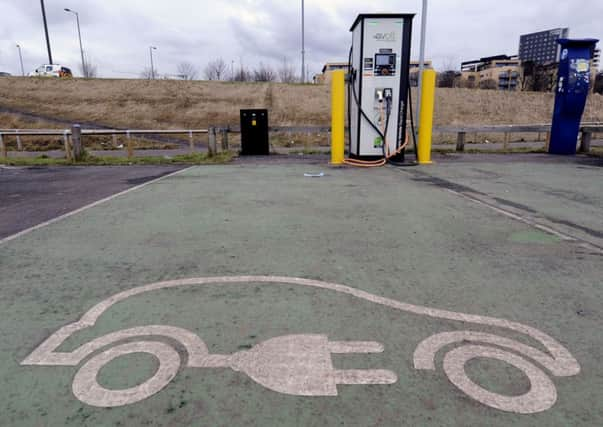Half of Scotland’s electric car chargers not used


However, they also showed a wide variation across Scotland, with all Edinburgh, Falkirk and Stirling chargers used but none of East Dunbartonshire.
The statistics, obtained by the RAC Foundation under freedom of information laws, provide a snapshot of charging activity at 885 sockets at 482 charging points last August.
Advertisement
Hide AdAdvertisement
Hide AdA total of 217 – 45 per cent – were not used once that month.
There was a near five-fold increase in charging activity compared to August 2013, but information about the number of chargers in use then was not provided.
FOLLOW US
SCOTSMAN TABLET AND MOBILE APPS
Nearly half of all vehicle charging was carried out in Edinburgh, Glasgow and Dundee, with all of Scotland’s 32 councils having charge points apart from East Renfrewshire and Inverclyde.
The motoring group said there are some 1,100 electric cars and vans in Scotland – up from around 200 two years ago.
The figures cover the ChargePlace Scotland network, part of which is open only to local authority or company vehicles.
The busiest charging point was at Janet Brougham House, a care home in Dundee, which was used 103 times.
The next most popular location was the Scottish Government offices at Victoria Quay in Leith. Chargers were used 80 times. In third place was the Ingliston park and ride near Edinburgh Airport, with 61.
RAC Foundation director Professor Stephen Glaister said: “The encouraging news is that electric car sales in the UK are at last showing signs of improvement, but we still have a charging network in Scotland that is running below capacity.
Advertisement
Hide AdAdvertisement
Hide Ad“Part of the reason for installing public charge points is to help drivers overcome their fear of ‘range anxiety’, but this does not come cheap. This data also suggests a good proportion of charge points are located on private premises, including council sites. This is encouraging as it was always envisaged that fleet operators would lead the way in the electric revolution.”
The Institute of Advanced Motorists (IAM) said the charging network should be further extended because electric vehicles had yet to catch on.
Neil Greig, its Scotland-based policy and research director, said: “It’s early days for the electric car in Scotland. We do need an infrastructure in place so the choice can be made. For drivers, there are still many issues, such as range anxiety, resale values, the cost of recharging and the time it takes. The range of vehicles is also still limited.
“The IAM would like to see firm long-term commitments from the Scottish Government that it will continue to take the hit for new infrastructure investment, and from Westminster that it will continue with the subsidy [for new vehicles] until the market is firmly established.”
East Dunbartonshire Council said its chargers had yet to be connected to power supplies, an issue that was being discussed with ScottishPower.
A spokeswoman for Shetland Islands Council, whose chargers were used only 17 per cent of the time, said: “There are a limited number of electric cars in Shetland. However, we are trialling three of the latest-technology vehicles and hope take-up will increase as a result.”
The Scottish Government said it hoped to banish all petrol and diesel vehicles by 2050.
A spokesman said: “We want to give drivers the confidence to make the same journeys they would in a petrol or diesel car, and with over 600 publicly available charge points now installed across Scotland, we are building a network which can accommodate an ever-increasing demand.”